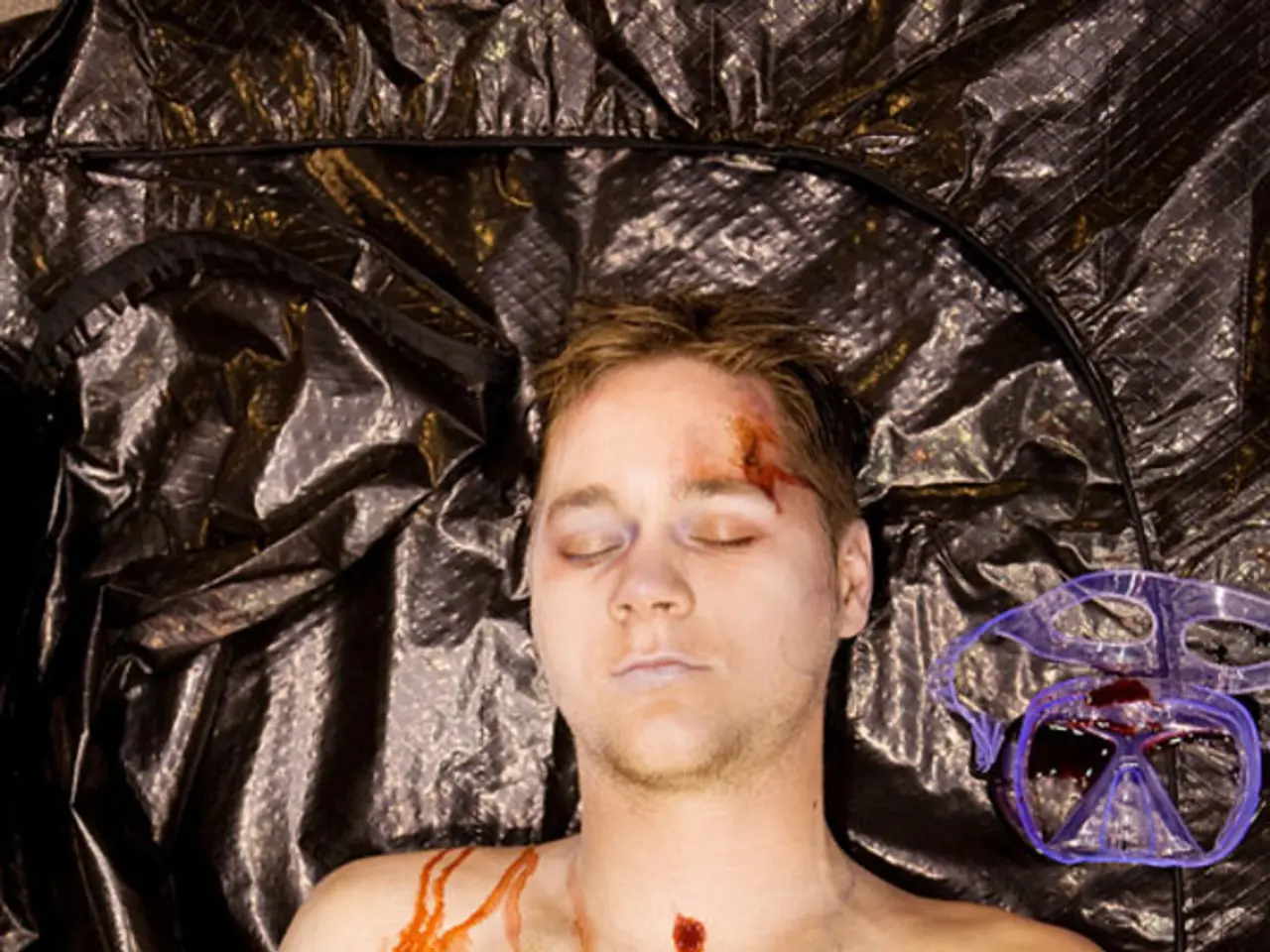Penile Concealment: Understanding the Condition, Root Causes, and Remedies
A buried penis is a medical condition where excess skin and fat from the scrotum, abdomen, or thigh can conceal a penis, making it less visible. This condition can occur at any age, including during adulthood, and is more common in males than previously thought [1][4].
Causes:
The condition can be congenital or acquired. Congenital causes include abnormal development of the penile shaft during fetal development. Acquired causes can be attributed to various factors such as obesity, hidradenitis suppurativa, lichen sclerosus, penoscrotal lymphedema, infections, traumatic events, and unsuccessful elective procedures like circumcisions [1][4].
Complications:
A buried penis can lead to several complications, including urinary difficulties (dribbling, inability to urinate standing), poor hygiene leading to infections (balanitis, urinary tract infections), pain and irritation, especially during erections, sexual dysfunction, psychological impact, and an increased risk of penile cancer due to chronic inflammation and infections [1][4].
Common Causes and Complications:
- Excess pubic fat pad and skin growth, often from obesity
- Scarring and skin disorders like lichen sclerosus
- Aging and associated tissue changes
- Medical conditions leading to skin retraction or inflammation [1][4]
Treatment Options:
Treatment for a buried penis typically involves surgery to remove excess fat and skin in the suprapubic area, release the suspensory ligament to expose more of the penis, and reconstruct the penis by a team of urologists and plastic surgeons. Prior to surgery, weight loss may be recommended to improve outcomes. Additionally, managing underlying conditions such as lichen sclerosus treatment and hormone therapy, if indicated, is essential [1][3][4].
Postoperative care is crucial to prevent scar contraction and ensure long-term success. Careful surgical technique and realistic patient expectations are essential to minimize complications such as scarring, erectile dysfunction, or changes in erection angle [1][3][4].
Addressing the Psychological Impact:
A buried penis can have significant psychological effects, including low self-esteem, anxiety, depression, and reduced sexual confidence. It's essential to address these issues alongside the physical treatment to ensure a holistic approach to recovery [1][4].
Prevalence and Research:
While one study indicates that it occurs in less than 4% of male newborns in Japan, less research is available about its prevalence among adults. Currently, little research is available on the prevalence of the condition, but it is not common [1][4].
Conclusion:
A buried penis is a treatable medical condition that can lead to various complications if left untreated. Effective treatment typically involves surgery combined with management of contributing factors and lifestyle interventions. In older individuals, noninvasive techniques such as weight loss may help, but surgery is typically necessary for the best results. Addressing the psychological impact is crucial to ensure a holistic approach to recovery.
- Diabetes, cancer, Crohn's, and psoriasis are examples of chronic diseases that can potentially impact mental health.
- Predictive science and medical research are essential for understanding the causes and complications of diseases like hepatitis and obesity.
- While a buried penis is not common, it is more prevalent than previously thought, occurring in males at any age.
- Complications of a buried penis can include urinary difficulties, infections, psychological impact, and even an increased risk of penile cancer.
- The causes of a buried penis can be congenital or acquired, with obesity, scarring, and skin disorders being common factors.
- In the treatment of a buried penis, managing underlying conditions like lichen sclerosus and hormone therapy is just as important as the surgical procedure.
- Postoperative care is crucial to ensure long-term success and to prevent complications like scarring and erectile dysfunction.
- In older individuals, noninvasive techniques like weight loss may help, but surgery is typically necessary for the best results.
- Addressing the psychological impact, including issues like low self-esteem, anxiety, depression, and reduced sexual confidence, is essential to ensure a holistic approach to recovery.
- It's important to remember that a buried penis is treatable, and effective treatment typically involves surgery combined with management of contributing factors and lifestyle interventions.
- Beyond physical health, chronic diseases like diabetes, cancer, and mental health conditions like depression also affect sexual health and men's health, underscoring the importance of health and wellness in all aspects of life.




